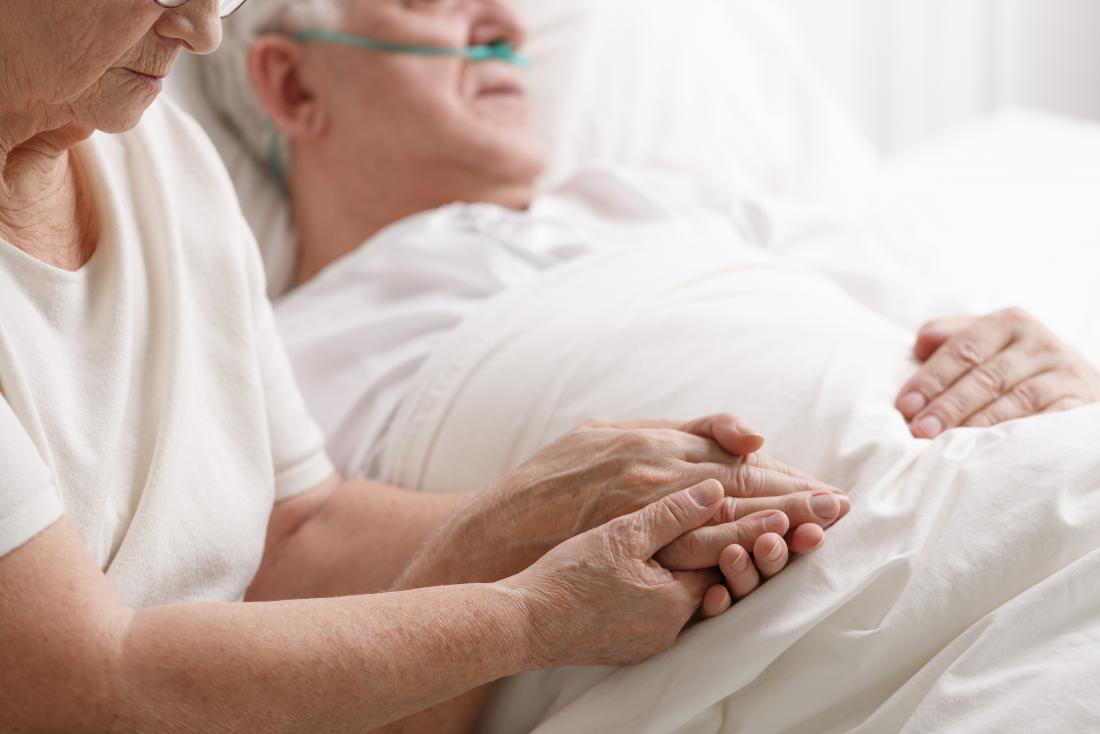
Hospice Helped Give My Life Back!
Eric is a beach lover and was a regular smoker up till his early 50s. However, once he quit smoking in the late 50s, he believed that he has dogged a bullet as he enjoyed great health for more than 10 years after quitting smoking.
However, in his early 70s, he began to experience subtle symptoms, such as chest congestion, shortness of breath, and infection. He was diagnosed with chronic obstructive pulmonary disease (COPD) and was told that he had lost more than 25% of his lung capacity.
He took the required medications and believed that he had stopped the disease in its track.
However, a few years later in 2015, he found out through another breathing test that he had lost 50% of his lung capacity.
After a few years of difficulties with his lungs, Eric has now found some relief. He chose Hospice…
“At one point of time, all his energy was spent just trying to breathe.” Jacob, his son said.
With the care he received, the way he lived and feels, has helped him turn his health for better. Eric said, “It’s unbelievable the things I can do now that I couldn’t do before.” His family, who wasn’t really sure that he would survive even a month, says Eric has been given the best gift because of Hospice care.
Chronic obstructive pulmonary disease or COPD is the 3rd most common cause of death among older adults in the United States. According to the Centers for Disease Control, “While more than 15.3 million American carry the diagnosis of COPD, another 15 million likely have the disease and aren’t aware of it.”
But what is COPD? How does it affect a person’s health? Can hospice help a COPD patient improve his quality of life? What is hospice COPD life expectancy? Is dying from COPD a painful death?
Today we will help you learn more about COPD and answer your questions reading COPD and Hospice!
COPD in Elderly

Chronic Obstructive Pulmonary Disease or COPD is a chronic lung disease that makes it difficult for the patient to breathe. It can cause long-term disability and can even lead to an early death. While there is no cure for COPD, treatment can help slow the progression of the disease and help with symptoms.
A majority of people don’t know that they suffer from COPD is because either it is under-diagnosed or misdiagnosed. A person who is short of breath may think he needs to get back in shape. Moreover, as people grow old, they believe shortness of breath is normal. Aging adults often choose to ignore symptoms and health care professionals often do not ask the right questions.
Dying of COPD is often described as dying of shortness of breath one breath at a time. Living with COPD can be difficult for seniors, especially during the later stages of the illness. Further, it can become challenging for the caregivers to deal with the symptoms and face the challenges alone.
If you or your aging loved ones are living with COPD, you don’t need to face the challenges alone. Hospice care help add an extra layer of support for the patient and his loved ones and make it easier to manage the symptoms, and improve the quality of life by addressing social, practical and spiritual issues.
Symptoms of COPD
Seniors who are diagnosed with COPD often blame the symptoms on the age or as the side effect of smoking. A majority of seniors are often not diagnosed with COPD until they have lost 50 percent of their lung function.
If you observe your aging loved ones suffering from any of the following symptoms, get in touch with a medical health professional at the earliest.
- Inability to keep up with simple activities like bathing, dressing up without feeling exhausted
- Shortness of breath even when performing a simple task like walking to the mailbox
- Phlegm increasing during coughing bouts
- The patient may be experiencing a chronic cough
- Eating is difficult for a patient when he experiences shortness of breath
- The patient may be fighting hard to breathe
Is Dying From COPD a Painful Death
Yes, the dying process of a COPD patient is painful if not managed properly. However, there is room for improvement and die a peaceful death.
A COPD patient who receives hospice care at the right time fares better than a COPD patient who did not choose hospice care.
The last days of a COPD patient can be characterized by pain, depression, anxiety, and dyspnea. However, appropriate hospice care and reassurance can help the patient prevent or minimize distress, thus improving his quality of life.
It must be remembered that COPD is a progressive disease as opposed to a curable one. Therefore, patients should choose to focus on controlling the symptoms instead of focusing on treating it.
COPD Hospice Eligibility Criteria
According to the Chronic Obstructive Pulmonary Disease Surveillance Report, published in the Morbidity and Mortality Weekly Report, COPD deaths rose steadily each year. While both males and females have shown increases in their death rates each year, female deaths have increased at a more dramatic rate and by the year 2000 had nearly surpassed the death rate of males.
https://www.rtmagazine.com/wp-content/uploads/2009/02/2009-02_01-01.jpg
COPD begins slowly and people often choose to ignore the early symptoms as a part of getting old. However, as the disease progress, the increasing COPD symptoms such as shortness of breath, respiratory infection, coughing, and fatigue can limit them from performing everyday activities.
People living with COPD are often unsure whether they meet the COPD hospice requirements of not. Here are a few factors that are considered in hospice eligibility for COPD patients.
- Patients with advanced COPD are candidates for hospice care
- Recent hospitalization for pulmonary infections or respiratory failure
- Changes in appetite
- Requires oxygen some of the time or all of the time
- Relevant activity limitations
- Impaired sleep functions
- May require breathing treatments
- Experiencing difficulties in eating without becoming short of breath
When to Consider Hospice Care for COPD
People often do not find out that they are suffering from COPD until the disease is more advanced and treatment is less effective. This is because people do not know the early signs.
Hospice care for people with COPD is effective but often underused. For seniors who die with COPD, their last few weeks are often characterized by a progressive decline in health status, increased reliance on family caregivers, and an increase in symptoms.
While it is important to discuss end-of-life care options with the patient living with a terminal illness, there are several factors that suggest it is the right time to consider hospice care for COPD.
- One or more hospitalizations for COPD in the past year
- Weight loss or decreased functional status
- The patient has less than 6 months to live
- Comorbid medical conditions that shorten the life span of the patient
Easing the Symptoms of COPD
Patients who enroll in hospice wish to avoid curative treatments and want to pass on their own terms in the comfort of their homes. They forego life-sustaining treatments. Patients suffering from end-stage COPD have specific needs that are unique to their illness. Although hospice is often recommended for people who have 6 months or less time to live, hospice helps a patient live his life to the fullest while enhancing the overall quality of life.
A team of experienced doctors, nurse practitioners, and volunteers works together to help the patient ease the symptoms of COPD. Hospice providers have extensive experience in managing pain and are trained to provide the right medication, at the right dose and at the right time.
While many people are using hospice care in COPD, still a majority of people believe that hospice care is used by people with cancer. Hospice care has much to offer for people living with advanced COPD. It involves paying attention to the emotions, practical, and spiritual needs and goals of the patient and his loved ones.
Hospice care is not only relevant for people living with COPD but is also important for people with other non-malignant respiratory diseases including interstitial lung disease and bronchiectasis.
Hospice care can be provided at a number of locations but is widely accessed by the patient in the comfort of his home surrounded by his loved ones. By providing the families with the necessary information and equipment, hospice makes it easy for the patient and his loved ones to enjoy their remaining time together.
